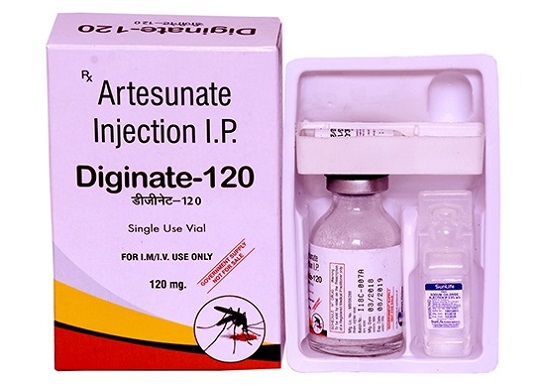Nikhil Prasad Fact checked by:Thailand Medical News Team Feb 16, 2025 1 month, 3 weeks, 4 days, 1 hour, 59 minutes ago
Medical News: A Promising Discovery in Parkinson’s Research
Scientists from Zunyi Medical University in China have made a significant breakthrough in the fight against Parkinson’s disease. Their research reveals that artesunate, a drug derived from a plant used to treat malaria, may help protect brain cells from damage linked to the disease. The findings provide hope for potential new treatments for Parkinson’s, a condition that affects millions worldwide.
 Artesunate Alleviates Parkinson’s Disease by Targeting Brain Cells
Artesunate Alleviates Parkinson’s Disease by Targeting Brain Cells
Parkinson’s disease is a progressive neurological disorder that primarily affects movement, causing tremors, stiffness, and difficulty with balance and coordination. The condition results from the gradual loss of dopamine-producing neurons in a region of the brain known as the substantia nigra. While there is no cure, researchers are exploring ways to slow the disease’s progression and protect nerve cells from damage. This
Medical News report focuses on a study investigating artesunate’s role in reducing brain cell death and its potential as a therapeutic option for Parkinson’s patients.
The Role of Copper in Parkinson’s Disease
Recent studies have suggested that excessive levels of copper in brain cells may contribute to the progression of Parkinson’s disease. Normally, the body tightly regulates copper levels because an imbalance can cause oxidative stress and cell death. Researchers in this study found that a process called cuproptosis - cell death triggered by excess copper - may be an underlying cause of dopamine neuron loss in Parkinson’s patients.
Artesunate was identified as a potential protective agent due to its ability to interact with a protein called metallothionein 2A (MT2A), which plays a crucial role in regulating copper levels in brain cells. By targeting this protein, artesunate helps reduce excess copper and prevents toxic damage to dopamine-producing neurons.
The Study and Key Findings
The researchers conducted experiments using both cell cultures and animal models to understand how artesunate interacts with brain cells. In rats with Parkinson’s-like symptoms, artesunate treatment significantly improved movement and reduced signs of nerve cell damage. The key findings of the study include:
-Protection Against Nerve Cell Death: Artesunate effectively shielded dopamine neurons from damage caused by excessive copper buildup.
-Activation of Protective Brain Cells: The drug specifically targeted astrocytes, a type of brain cell that supports and protects neurons, to enhance their natural defense mechanisms.
-Reduction of Copper Toxicity: Artesunate reduced intracellular copper levels, which helped prevent the process of cuproptosis that leads to nerve cell death.
-Improved Motor Function in Rats:
t;
Rats that received artesunate treatment showed significant improvements in movement tests, suggesting potential benefits for Parkinson’s patients.
-Identification of a Key Functional Site: The study pinpointed a specific part of the MT2A protein (Lys-31) as crucial for artesunate’s protective effects.
What This Means for Parkinson’s Patients
The findings suggest that artesunate could be a potential candidate for future Parkinson’s treatments. Unlike existing medications that mainly manage symptoms, artesunate appears to address an underlying cause of the disease - copper toxicity and cell death. By reducing excessive copper levels and preventing cuproptosis, the drug may help slow down the progression of Parkinson’s, offering patients a new avenue for treatment.
While these results are promising, more research is needed before artesunate can be tested in human clinical trials. Scientists must confirm its safety, determine the optimal dosage, and assess potential side effects in people with Parkinson’s disease. If future studies confirm its benefits, artesunate could become a valuable addition to Parkinson’s treatment options.
Conclusion
The study by researchers at Zunyi Medical University provides strong evidence that artesunate may protect dopamine neurons by reducing excess copper levels and preventing nerve cell death. Their findings highlight a previously unrecognized role of the MT2A protein in Parkinson’s disease and suggest that targeting this protein with artesunate could be a viable therapeutic approach. Although more studies are needed, this research opens new doors for developing treatments that go beyond symptom management to address the root causes of Parkinson’s disease.
The study findings were published on a preprint server and are currently being peer reviewed.
https://papers.ssrn.com/sol3/papers.cfm?abstract_id=5122494
For the latest on Parkinsons Disease, keep on logging to Thailand
Medical News.
Read Also:
https://www.thailandmedical.news/news/breaking-chinese-scientist-develop-wireless-based-nanoparticles-to-reverse-parkinson-s-disease-via-brain-stimulation
https://www.thailandmedical.news/news/understanding-how-mitochondrial-issues-may-fuel-memory-loss-in-parkinson-s-disease
https://www.thailandmedical.news/news/repurposing-diabetes-drugs-for-parkinson-s-disease
https://www.thailandmedical.news/pages/thailand_doctors_listings
